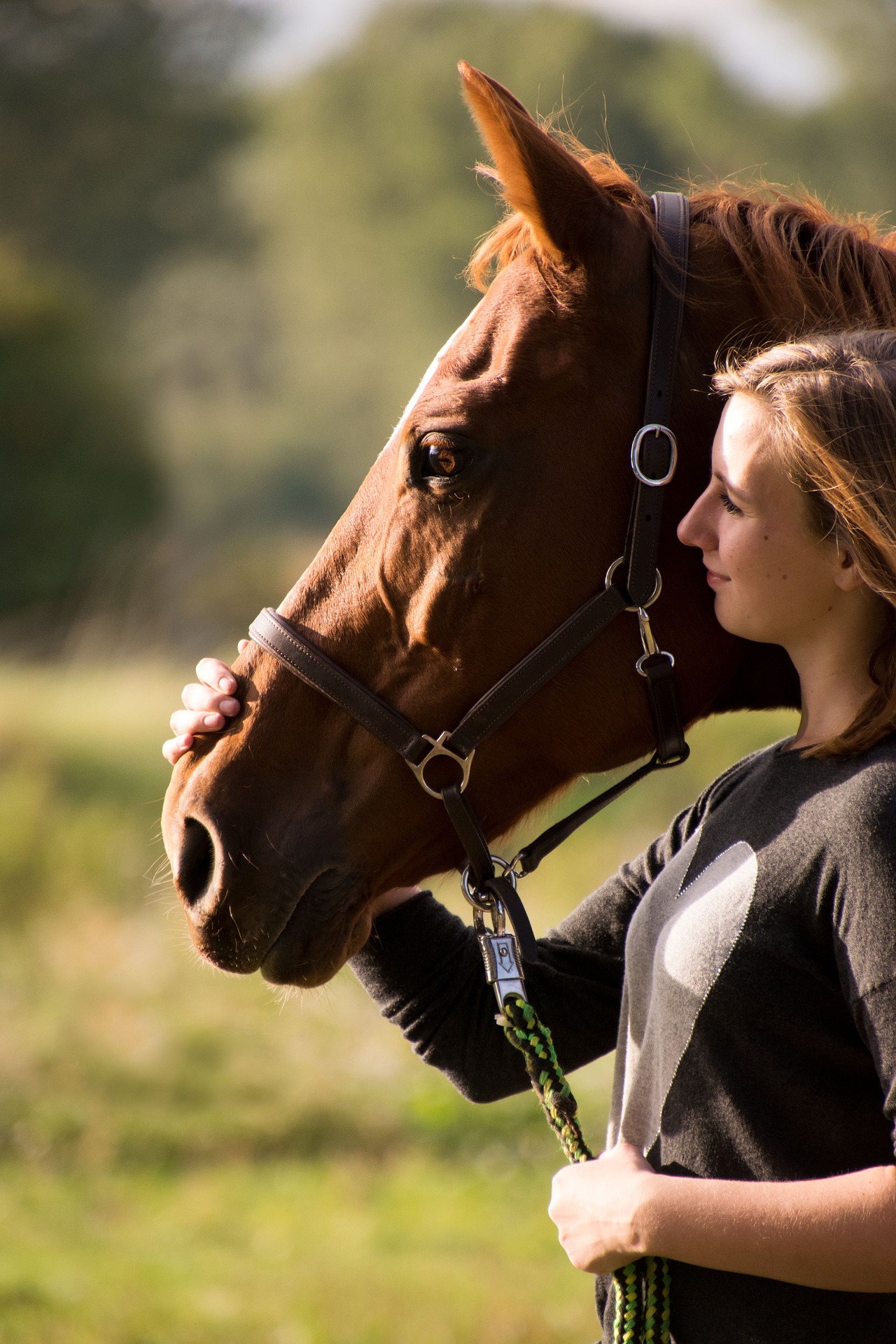Question: I have a 7-year-old grade-horse gelding that’s very receptive to training. I’m aware of the importance of bonding—that is, building mutual respect and trust to create a positive relationship. I was wondering whether you could suggest some specific exercises I could do on the ground (in the stall or the barn aisle), when the weather prohibits going on a trail ride. – Ginger Hanson, Ithaca, New York.
Answer: First let me say this: Everything positive that you do with your horse enhances the bond between the two of you. Now, here are some specific ground exercises you can do in the stall and in the barn aisle or small, indoor arena.
[READ: Building Connection & Trust With Your Horse]
In the Stall

Halter your horse. If your horse stays calm in his stall, enter his stall frequently, and put a halter and lead rope on him. After you do so, rub his neck and shoulder and just stand with him for a few minutes. Speak to him in a soft, positive voice. Then remove the halter. By doing this, you’ll let him know that he won’t have to work every time you enter his stall, halter in hand. He’ll learn to trust and be more comfortable around you.
Groom your horse. Grooming your horse is a great exercise for increasing the bond. He’ll also enjoy the attention. (You’ll also promote a healthy coat.)
Do foot work. Work on lifting your horse’s feet without resistance. Desensitizing him to having his legs and feet handled is also a part of bonding, and will help your farrier and veterinarian work on your horse’s feet.
Start by lightly rubbing your horse’s foreleg, a few inches above the knee. Then gradually work your way toward the hoof. As long as he’s relaxed, continue lightly rubbing down his leg. If he gets upset, stop, go back to the point where he was relaxed, and start over. Try to rub farther down each time. End on a positive note: Tell him he did well, and rub his neck. Over several sessions, repeat this procedure until you reach his fetlock and he stays relaxed.
Next, teach him to lift his leg on cue. Squeeze a couple of inches above his fetlock, cluck, and lift up his hoof. Repeat this until he learns to lift his hoof when you give these tactile and verbal cues.
To desensitize your horse’s rear legs, start on his left side. Place your left hand on his shoulder and your right hand on his back, a few inches behind his withers. (This contact will help prevent him from becoming startled at your approach.) With your right hand, gently rub down his back to his left hip. Replace your right hand with your left one, then use your right hand to slowly rub down his left rear leg.
When your horse allows you to rub down to his fetlock, use your thumb and index finger to lightly squeeze his leg a few inches above it. As soon as he relaxes while you hold his leg, gently put his hoof down to reward him. Repeat this procedure on his right side.
[READ: Gaining Your Horse’s Trust]
In the Barn Aisle/Small Indoor Area
Do ground maneuvers. You can do quite a few maneuvers with just a lead rope and halter to increase the bond between you and your horse, and instill a positive leadership position. For instance, you can work on his backup, forward motion at a walk, and stop on cue. Here’s how to teach the backup and stop; apply these same pressure-and-release principles to the other maneuvers.
• Stand on your horse’s left side with your shoulder even with his throatlatch, and face his hind end. Hold the lead rope snug under his chin with your left hand; hold the coiled remainder of the lead rope in your right.
• From the halt, apply light, backward pressure on the lead rope with your left hand. At the same time, give your horse a verbal cue, such as a cluck or the word “back.” (Be consistent with your verbal cue.) Your verbal cue will reinforce your lead-rope cue. Note: If your gelding doesn’t back up at first, don’t get frustrated. Simply continue to apply light pressure until he takes a backward step.
• As soon as your horse takes a backward step, release the pressure, and give him a pat. Release of pressure is his reward for doing what you’re asking of him.
• Using backward lead-rope pressure and your verbal cue, ask your horse to back about three or four steps. Then give him the stop cue: Say “whoa,” and release the lead-rope pressure. Don’t allow him to stop on his own; keep applying pressure until you give the stop cue.
• Once your horse backs up on cue from his left side, switch to his right side, and repeat this procedure. Your gelding will then back for you from the ground no matter which side you happen to be on.
Longe your horse. If you happen to have a large enough area that’s on dry, level ground, longe your horse. Work on his gait transitions to keep him tuned up. Send him in both directions, and use your verbal cues. You’ll not only reinforce his foundation training, you’ll deepen the bond, as well as your leadership position.




